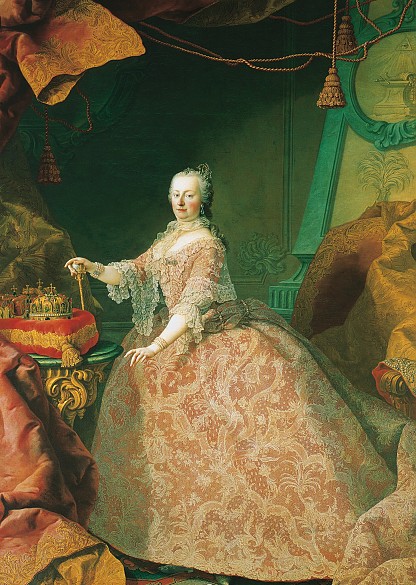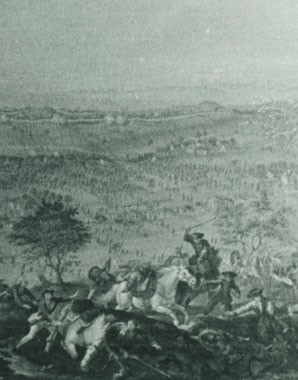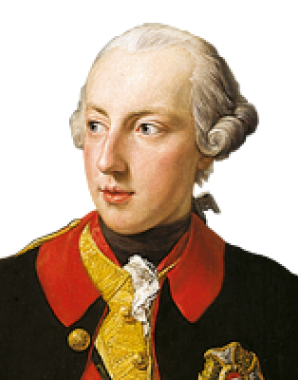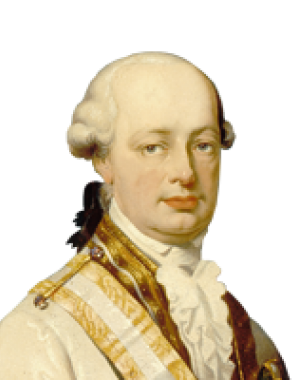Maria Theresa: Europe’s mother-in-law
The ‘renversement des alliances’, the rapprochement of the Habsburg Monarchy with France, constituted the diplomatic revolution of the 1750s: the hostile dynasties of Bourbon and Habsburg united to take on their mutual enemies Prussia and Britain.
In order to strengthen the alliance between the dynasties marriages were arranged with the various lines of the Bourbons who ruled in Parma, Naples and Spain as well as France.
This change had been wrought by State Chancellor Wenzel Anton von Kaunitz (1711–1794), who initially started secret negotiations with France, ruled at the time by Louis XV. Maria Theresa found an important point of contact in the king’s mistress of several years, Madame de Pompadour, who had great influence over the monarch. Although the circumstances at the court of Versailles were deeply abhorrent to the puritanically inclined Maria Theresa, she was pragmatic enough to overlook them.
The new policy of alliance was to be tested in 1756, when the Seven Years’ War broke out, a conflict between the leading powers of Europe that assumed the dimensions of a global war through the spread of hostilities between France and Britain to their overseas colonies. From Maria Theresa’s point of view the object of contention was Silesia, the war a last attempt at re-conquering the wealthy province.
In 1760, as a sign of the new unity between Austria and France, while the Seven Years’ War raged in Europe, the first of the Bourbon-Habsburg marriages was celebrated, between Maria Theresa’s eldest son and heir Joseph and Isabella of Bourbon-Parma. The bride was from a collateral northern Italian line of the royal French dynasty but was a granddaughter of Louis XV on her mother’s side.
In 1765 a second marriage followed: Maria Theresa’s second-eldest son Leopold married Maria Luisa, the daughter of Charles III, the Bourbon king of Spain. The wedding celebrations in Innsbruck were overshadowed by the sudden death of Franz Stephan.
The death of Franz Stephan removed a major opponent of the rapprochement with France. Maria Theresa’s husband greatly mistrusted France and what he saw as an ‘unnatural’ alliance. He resisted the marriage schemes of his wife for their children and thus became increasingly isolated from the political arena. Following his death in 1765 Kaunitz was now free to act, and a whole series of marriages with members of the Bourbon dynasty took place.
Archduchess Maria Josepha was chosen as the bride for King Ferdinand of Naples and Sicily. The bridegroom was considered unprepossessing and described as uncouth and mentally retarded. The bride escaped her fate by dying suddenly of smallpox shortly before the wedding was due to take place. Fearing that this important match might otherwise be lost, Maria Theresa offered her next-eldest daughter Maria Karolina as a replacement. The Bourbon king accepted the proposal and thus Maria Karoline moved to Naples in 1768.
Yet another union with the Bourbon dynasty was forged with the marriage of Archduchess Maria Amalie to Ferdinand of Bourbon-Parma in 1769. However, the most important of these unions and at the same time the crowning of Maria Theresa’s endeavours to establish a dynastic network in Europe, was the marriage of her youngest daughter, Maria Antonia, to the future king of France Louis XVI, in 1770.

















